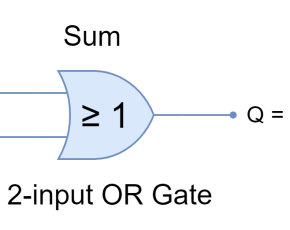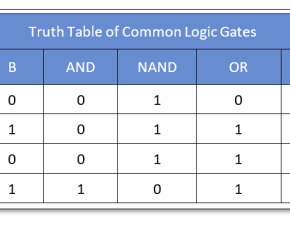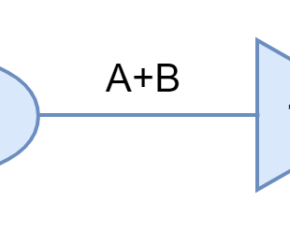Logic NAND Function
- Muhammad Shahid
- m_shahid@live.co.uk
- 986 Views
- 0 Comments
Logic NAND Function
The logic NAND function gives the inverted output of the logic AND function. It complements the output of the logic AND function to give the NOT AND (NAND) function. The logic NAND function is the combination of two logic functions that are AND & NOT logics. These AND & NOT logics form a series combination to produce the logic NAND function.

The combination of these two logics is symbolized by placing an “Inversion Bubble” at the output of an AND gate. The logic NAND symbol is shown in the following figure along with its Boolean expression. The Boolean expression of the NAND gate is represented by a product of inputs with an overline (¯). The product of inputs expresses AND logic and, whereas, the overline (¯) represents the NOT logic.

Similar to the logic AND function, the logic NAND function can be represented and explained by switches. From the previous article on Logic AND Function, it is known that AND function can be represented by switches that are placed in series with the output. However, in the logic NAND function, these series switches (inputs) are placed parallel to the output. The representation of a logic NAND function in the form of switches is shown in the following figure.
The logical states of “0” & “1” represent a switch with “Open” & “Closed” positions, respectively.
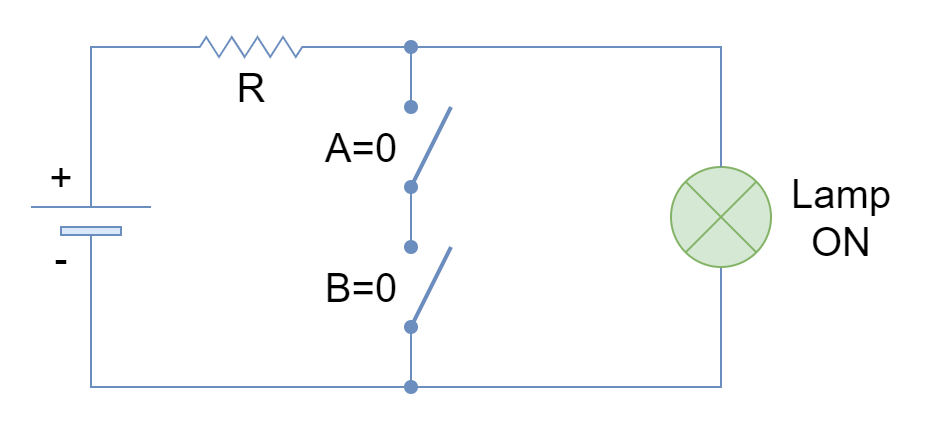
In the above figure, the current flows through the lamp to turn it ON when both switches (A & B) (inputs) are open (both at logic 0).

The closing of any of the switches does not change the state of the lamp and remains ON until both switches are closed.
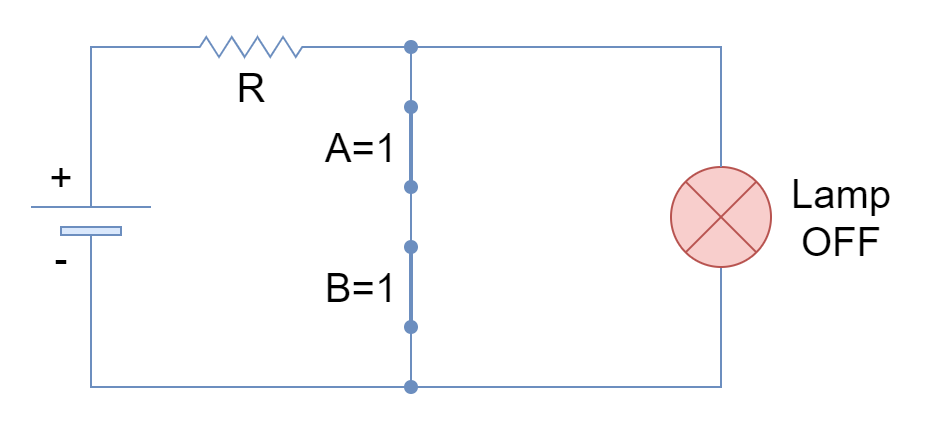
When both switches are closed (both at logic 1), the current flows through the switches bypassing the lamp and it turns OFF.
The only condition for the lamp to remain OFF is when all of the switches are closed or at a HIGH state. This is in reverse with the logic AND function which, contrarily, turns ON the lamp when all of the inputs are at a HIGH state.
The switches representation of a logic NAND function is expressed in the form of a truth table which is given below:
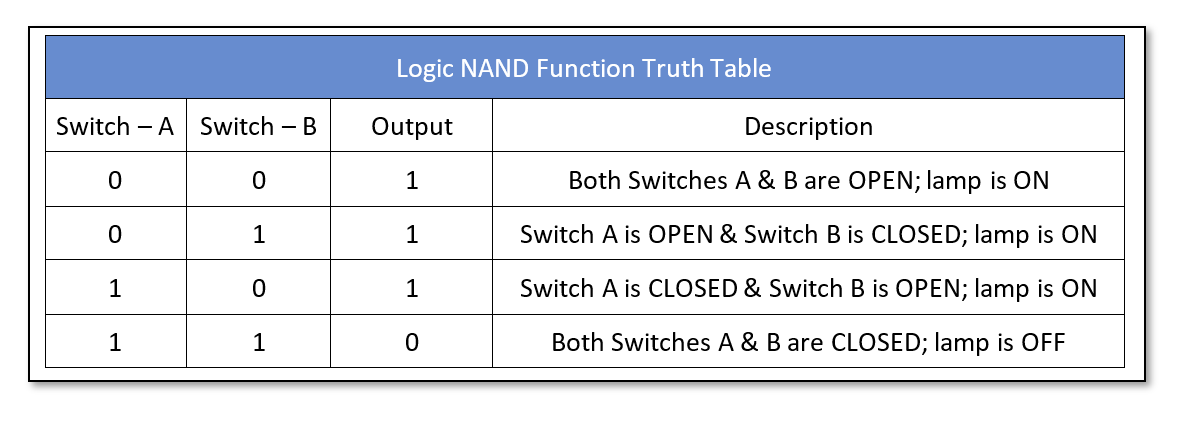
Construction of NAND logic
The logic NAND gate can be constructed using Resistor-Transistor Logic (RTL), Transistor-Transistor Logic (TTL), or Complementary Metal-Oxide Semiconductor (CMOS). These, basically, constitute the formation of logical families. The logic NAND gate with two inputs constructed using Resistor-Transistor Logic (RTL) is shown in the following figure.
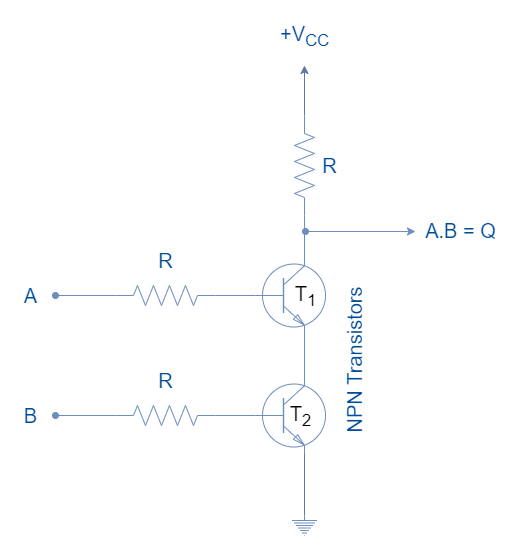
The logic NAND function can be extended to include more than two inputs. In Boolean expression form, the additional input or variable is added to the product with an overline. In logic gates, the NAND gates are cascaded to add in more inputs as shown below.

Moreover, the logic NAND function with an odd number of inputs can also be achieved by using logic “HIGH” or “1” in Boolean expression form. Whereas, in the case of NAND gates, the other input (unused/ discarded) must be pulled high through a suitable resistor as shown in the following figure.

Universal Gate
The logic NAND gate is referred to as a Universal Gate as every other logic function can be constructed using it. They can construct all the functions which can be constructed using basic logic gates i.e. AND, OR, and NOT. The construction of basic logic functions using logic NAND gates is shown below.
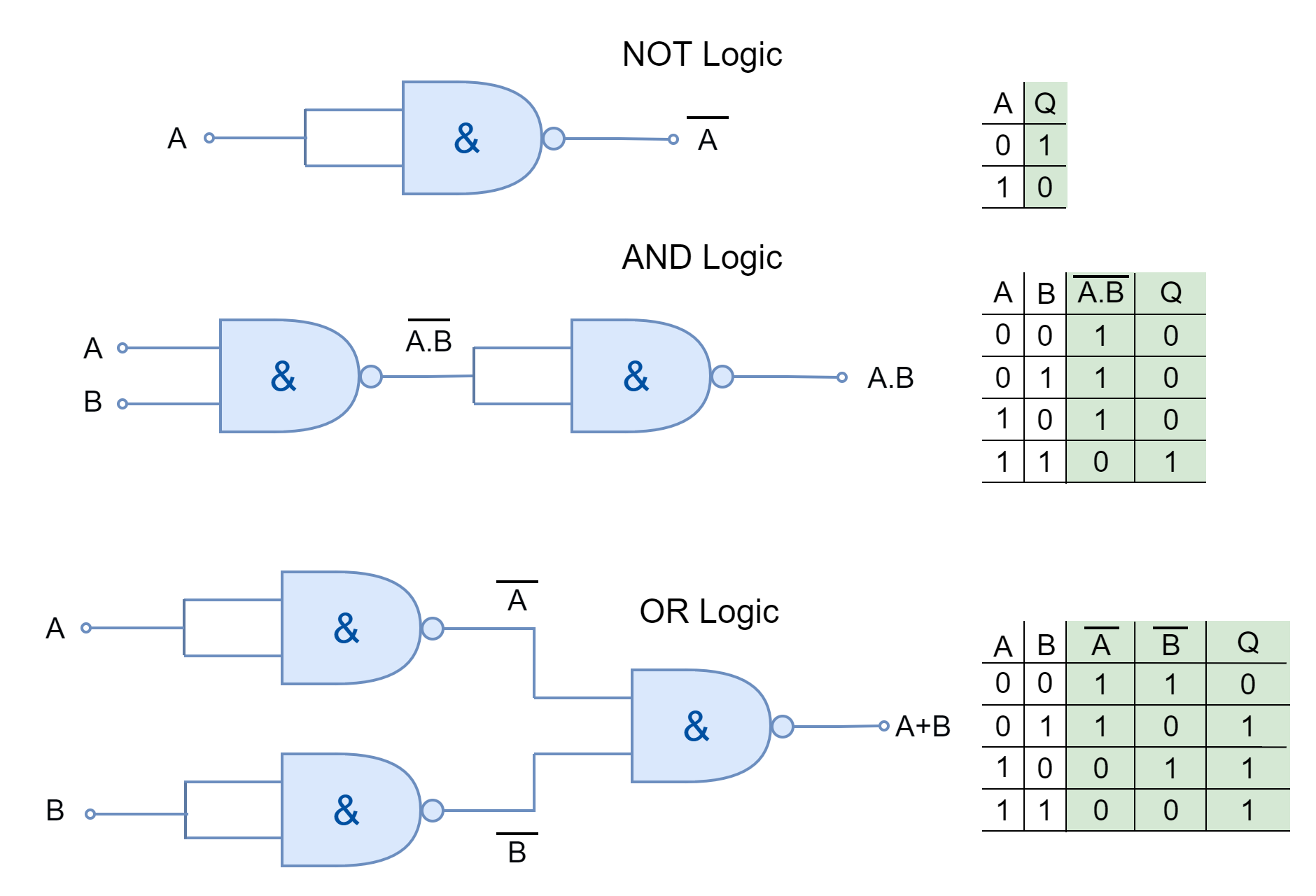
Boolean Algebra Laws
Similar to logic AND function, the logic NAND function follows all the Boolean algebra laws and theorems such as Annulment, Identity, Idempotent, Complement, Commutative and Associative Laws which are explained briefly in the Logic AND function.
Commercially Available Logic NAND Gates
The logic NAND gates are available in form of I.C. packages which contain multiple NAND gates with multiple inputs to each gate. The selection depends merely on the application and the number of logic gates are required. They come in both Transistor-Transistor Logic (TTL) and Complementary Metal Oxide Semiconductor (CMOS) family packages. A few commercially available logic NAND gates are given below:
- 74LS00 Quad 2-input
- 74LS10 Triple 3-input
- 74LS20 Dual 4-input
- 74LS30 Single 8-input
- CD4011 Quad 2-input
- CD4023 Triple 3-input
- CD4012 Dual 4-inputs
Conclusion
- The logic NAND function gives output FALSE only when all of its inputs are in a TRUE state.
- Any of the inputs in the FALSE state will lead the NAND function to the TRUE output.
- The logic NAND function can be represented by an electrical circuit having two series switches in parallel with the load. When any of the switches are closed (input at TRUE state) then supply passes to the load/ lamp to turn it ON.
- The logic NAND gate is also known as Universal Gate because it can construct every other logic.
- The logic NAND gates can be cascaded together to obtain logic NAND having more than two inputs.
- The commercially available packages come in different I.C. packages. Each IC package contains multiple NAND gates.





